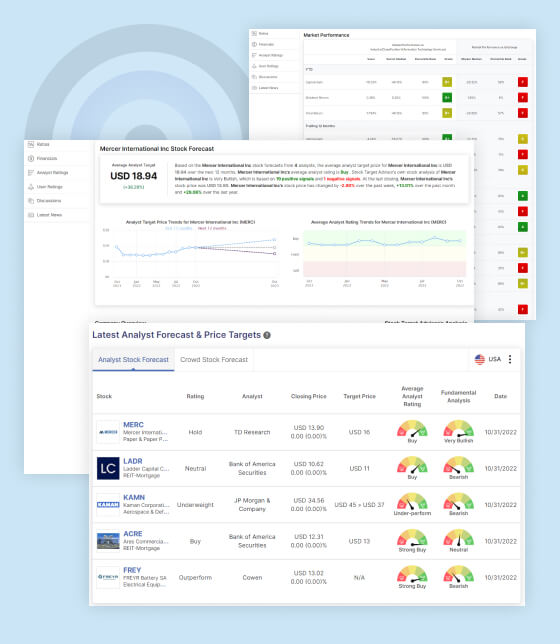Bitcoin & Financial Markets
Bitcoin has experienced a significant surge in value, with the cryptocurrency reaching levels not seen since its 2021 bull run, and now has reached new all time highs . This has prompted some analysts and investors to speculate about the broader implications of Bitcoin’s upward momentum, particularly regarding its potential to signal a top in stock markets. As Bitcoin continues to break through resistance levels and capture the attention of retail and institutional investors alike, the question arises: could Bitcoin’s bull run be a canary in the coal mine for broader financial markets, signaling that stocks are nearing their peak?
To address this question, we need to consider a number of factors: the relationship between Bitcoin and traditional financial markets, the current macroeconomic environment, and historical precedents. Let’s explore the arguments for and against Bitcoin’s bull run as an indicator of a stock market top.
Bitcoin and the Stock Market: Correlation or Divergence?
Historically, Bitcoin has been viewed as an uncorrelated asset—a hedge against inflation and a store of value that operates independently of traditional financial markets. However, this narrative has become increasingly muddled as institutional investors have begun treating Bitcoin as a risk-on asset, trading it in tandem with stocks, particularly during periods of economic uncertainty.
- Risk-On Asset Behavior: In the current environment, Bitcoin has increasingly behaved like a “risk-on” asset, rising during periods of market optimism and falling during market sell-offs. For instance, during the market rally in 2020 and 2021, Bitcoin mirrored the upward trajectory of equity markets, particularly in sectors like tech and growth stocks.
- Correlation with Tech Stocks: Over the past year, Bitcoin has shown increased correlation with Nasdaq stocks, particularly large-cap tech companies such as Tesla, Amazon, and Nvidia. Both sectors have benefited from the same macro trends—easy monetary policy, low interest rates, and a risk appetite for speculative assets. As tech stocks reached new highs, Bitcoin followed a similar path, leading some to believe that Bitcoin could act as a barometer for broader stock market movements.
However, while the relationship between Bitcoin and stocks has been strengthening, it is not definitive enough to claim that Bitcoin’s current bull run signals an imminent market peak. Let’s explore why Bitcoin’s price movements may not necessarily reflect stock market trends in the near term.
What Could Be Driving Bitcoin’s Current Bull Run?
Before jumping to conclusions about a stock market top, it’s essential to understand the specific factors driving Bitcoin’s bull run.
- Institutional Adoption: One of the most significant drivers of Bitcoin’s price over the past few months has been increased institutional interest. Large financial institutions, corporations, and asset managers have continued to explore and integrate Bitcoin into their portfolios. This has led to higher liquidity and an increased sense of legitimacy around Bitcoin, which has driven price appreciation.
- Inflation Hedge Narrative: Despite fluctuating inflation rates, Bitcoin remains attractive to investors as a potential hedge against inflation. With central banks worldwide signaling that they will continue to print money to service government debt and support economic recovery, many see Bitcoin’s fixed supply as an antidote to fiat currency devaluation.
- Halving Cycle and Scarcity: Bitcoin operates on a predictable schedule of block rewards, and the next halving event, which reduces the supply of new Bitcoin entering circulation, is expected in 2024. Historically, Bitcoin’s price has tended to rise in the months leading up to and following a halving event, due to the perceived increase in scarcity.
- Global Geopolitical Events: Rising tensions and instability—such as the ongoing war in Ukraine, monetary policy shifts, and potential banking sector stress—have increased interest in decentralized, borderless assets like Bitcoin. Investors seeking a safe haven from traditional markets may be turning to Bitcoin as an alternative store of value.
- Donald Trump’s election victory have generally benefited Bitcoin and cryptocurrencies through a more perceived favorable regulatory environment, where his administration adopts a hands-off approach. His pro-business policies, tax cuts, and focus on deregulation create a favorable economic environment for crypto. Trump’s anti-establishment rhetoric also aligned with the decentralized ethos of Bitcoin. Additionally, economic uncertainty during his presidency led some to view Bitcoin as a hedge against traditional financial risks.
Given these drivers, the current bull run in Bitcoin may have more to do with cryptocurrency-specific factors rather than broad market trends. The cryptocurrency space has matured, and price movements are increasingly driven by factors unique to the asset class, such as adoption trends, network upgrades (like the Bitcoin Lightning Network), and speculative trading behavior.
Bitcoin’s Bull Run and the Broader Macroeconomic Environment
The broader macroeconomic environment plays a crucial role in determining the relationship between Bitcoin’s price movements and the stock market. As of late 2024, we are seeing the following key developments:
- Interest Rates and Inflation: The Federal Reserve has been aggressive in raising interest rates to combat inflation, but signs of a cooling economy suggest that rate hikes may be nearing an end. Lower rates or a pause in tightening could push more capital into risk assets, including both stocks and cryptocurrencies. If Bitcoin’s bull run is fueled by speculation that interest rates will remain low for longer, it may coincide with rising stock prices.
- Recession Risks: Although inflation is still a concern, there are growing fears of an economic slowdown or recession. In the past, Bitcoin has performed relatively poorly during risk-off periods, particularly during market corrections when liquidity is withdrawn from speculative assets. If the broader stock market were to enter a bear market or face a sharp correction, Bitcoin might also experience significant declines as institutional investors pull back from both asset classes.
- Global Financial System: The ongoing reconfiguration of the global financial system, including BRICS nations considering alternatives to the U.S. dollar and the growing influence of digital currencies in global trade, may contribute to Bitcoin’s rise.Likewise, XRP has been positioned as a world bridge currency, facilitating seamless international transactions and further reinforcing the growing role of digital assets in the financial ecosystem. If Bitcoin is becoming more integrated into global financial systems, this could lead to less correlation with traditional equities.
Historical Precedents: Bitcoin and Market Tops
Looking back at Bitcoin’s past bull runs and broader stock market performance, we can draw a few parallels, but there is no conclusive historical evidence that Bitcoin’s price movements reliably signal a top in equity markets.
- 2017 Bull Run: In 2017, Bitcoin reached an all-time high of nearly $20,000, just as traditional stock markets were experiencing a strong rally. Bitcoin’s rise was largely driven by retail speculation, and when the cryptocurrency bubble burst in 2018, stocks experienced a correction as well, but the two were not directly correlated.
- 2021 Bull Run and Stock Market Divergence: In 2021, Bitcoin saw a dramatic rise above $60,000, but this did not coincide with an immediate downturn in equities. While stocks did experience a correction later in the year (particularly tech stocks), the cryptocurrency market was more volatile and independent, with its own set of catalysts (such as Elon Musk’s influence on Bitcoin’s price and the rise of NFTs and DeFi).
- 2023-2024 Correlation: In contrast, the current bull run in Bitcoin coincides with optimism in global markets, particularly in tech stocks. If Bitcoin and equities continue to move in tandem, this could indicate that Bitcoin’s rise is being driven by a broader risk-on sentiment that includes both cryptocurrencies and traditional stocks.
Outlook: A Top in Stock Markets or a Divergent Asset Class?
At this point, there is insufficient evidence to argue definitively that Bitcoin’s bull run signals an imminent top in stock markets. While there are some historical instances where Bitcoin’s rise was followed by a correction in equities, the current environment is more complex. Bitcoin’s surge seems to be driven by cryptocurrency-specific factors, including institutional adoption, inflation hedging, and scarcity driven by the halving cycle, rather than a direct signal for the broader equity market.
However, the correlation between Bitcoin and tech stocks is undeniable, and the potential for both to experience declines in a broader risk-off environment—particularly if interest rates remain elevated or if recessionary pressures build—should not be ignored. Investors should monitor the interplay between Bitcoin, stocks, and macroeconomic indicators like interest rates and inflation to understand how these markets are evolving. In the short term, Bitcoin’s price movements may reflect broader risk sentiment, but its behavior should not be viewed as a guaranteed signal for stock market tops or bottoms.
Ultimately, Bitcoin’s role as a leading indicator of broader market trends remains uncertain. While its current bull run reflects investor optimism, it is still speculative, and its future trajectory will likely remain tied to a combination of cryptocurrency-specific factors and the broader macroeconomic environment, but its worth taking the proposition seriously as part of a risk analysis basis.

STA Research (StockTargetAdvisor.com) is a independent Investment Research company that specializes in stock forecasting and analysis with integrated AI, based on our platform stocktargetadvisor.com, EST 2007.





























